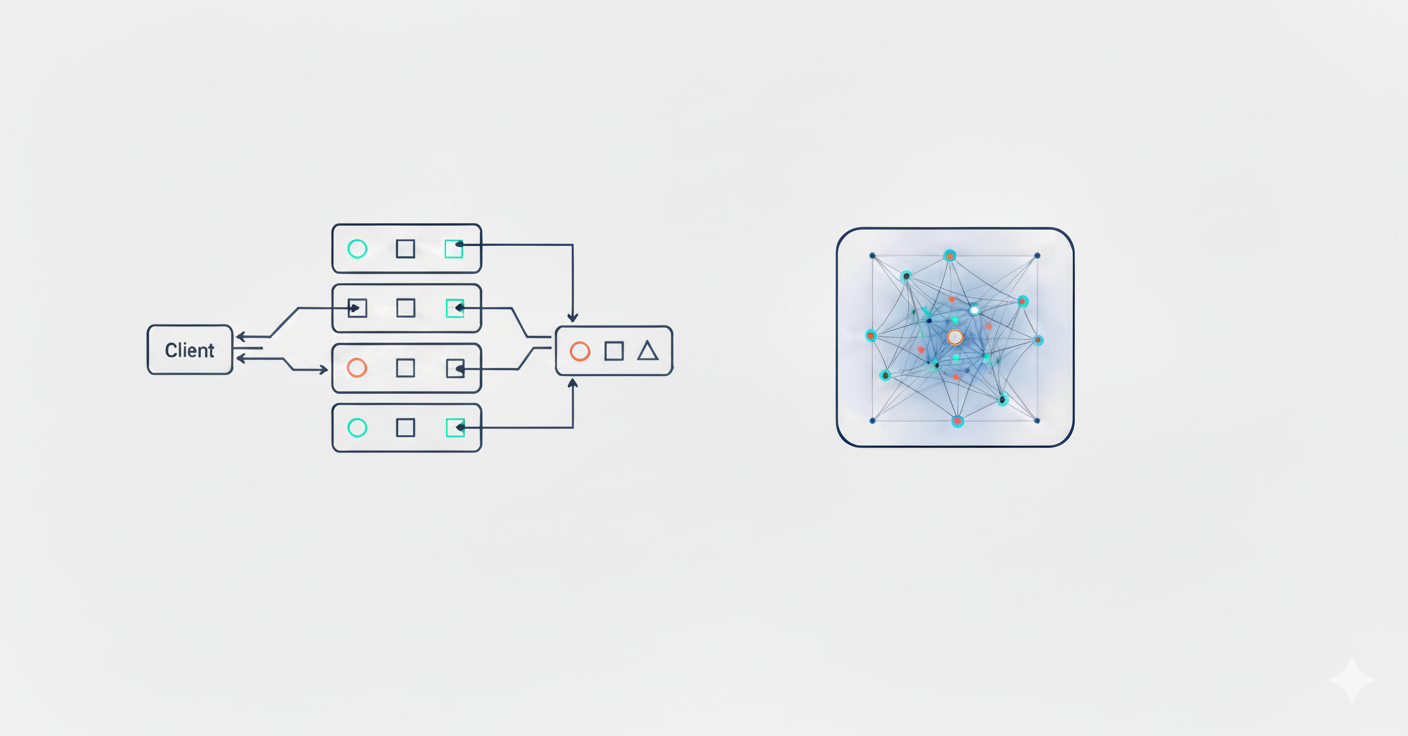
REST vs GraphQL: When Each Pattern Makes Sense in Modern Architectures
In recent years, building APIs has become a core part of modern software architectures. Web apps, mobile apps, and even IoT devices need to communicate with servers in an efficient and scalable way. In this context, two main approaches stand out: REST, established for decades, and GraphQL, introduced in 2015 by Facebook.
Both solve the same problem — exposing data and operations — but they do it with very different philosophies. The real question is: when should you use REST and when should you use GraphQL? Let’s dive in, with some Laravel/PHP examples to make things concrete.
Quick Overview
REST
REST (Representational State Transfer) is based on resources. Each resource (users, orders, products) is represented by a URL, and we interact with them using HTTP verbs:
- GET
/users/1→ fetch a user - POST
/users→ create a new user - PUT
/users/1→ update a user - DELETE
/users/1→ remove a user
It’s simple, widely supported, and works very well with caching tools like CDNs and proxies.
GraphQL
GraphQL takes a declarative approach. The client defines exactly which fields it needs and can combine data from multiple resources in one request. Instead of multiple endpoints, there is a single endpoint (/graphql) that interprets queries.
This gives more flexibility to the client, but it also increases backend complexity.
Practical Examples in Laravel
REST in Laravel
In Laravel, it’s natural to expose REST endpoints using controllers and resources:
// routes/api.php
Route::get('/users/{id}', [UserController::class, 'show']);
// app/Http/Controllers/UserController.php
class UserController extends Controller
{
public function show($id)
{
return User::with('posts')->findOrFail($id);
}
}REST response (JSON):
{
"id": 1,
"name": "Ranieri",
"posts": [
{ "id": 10, "title": "REST vs GraphQL" }
]
}GraphQL in Laravel (with Lighthouse)
With Lighthouse, we can declare schemas in .graphql files:
# schema.graphql
type User {
id: ID!
name: String!
posts: [Post!]! @hasMany
}
type Post {
id: ID!
title: String!
}
type Query {
user(id: ID!): User @find
}GraphQL query:
{
user(id: 1) {
name
posts {
title
}
}
}GraphQL response (JSON):
{
"data": {
"user": {
"name": "Ranieri",
"posts": [
{ "title": "REST vs GraphQL" }
]
}
}
}Notice how the client requested only name and title, avoiding unnecessary fields.
When REST Makes More Sense
Despite the hype around GraphQL, REST is still the best choice in many scenarios:
- Public APIs: most third-party integrations (Stripe, Twilio, Cielo) use REST because it’s simple and well-documented.
- Caching with CDN: each resource has a unique URL, which makes caching straightforward.
- Legacy systems: REST is easier to integrate with existing architectures.
- Simplicity: if your API is small and predictable, REST is often enough.
When GraphQL Shines
On the other hand, GraphQL is powerful in modern contexts:
- Dynamic frontends (React, Vue, mobile apps): each screen can ask for exactly the data it needs.
- Avoiding overfetching/underfetching: REST may return too much or too little data; GraphQL avoids this.
- Aggregating microservices: a GraphQL gateway can unify data from multiple services.
- Custom payloads: clients have freedom to shape the response.
Trade-offs and Pitfalls
Both approaches have challenges:
- REST: risk of overfetching, where clients receive more data than needed.
- GraphQL: complex queries can overload servers if not limited by depth or cost rules.
- Security: easier to handle per endpoint in REST; in GraphQL, sometimes you need field-level authorization.
REST + GraphQL: The Hybrid Approach
Many companies now use a hybrid model:
- REST for external/public APIs.
- GraphQL as a BFF (Backend for Frontend), giving flexibility to web and mobile clients.
For example, your microservices may still expose REST, but a GraphQL gateway can provide a better developer experience for your frontend team.
Conclusion
REST and GraphQL are not enemies — they are complementary tools. REST remains excellent for public APIs, simple cases, and integrations. GraphQL is ideal when you need flexibility, multiple client types, or to aggregate data.
As developers, our role is to choose the right tool for the right problem. If your REST API already works, don’t switch just for the hype. But if your frontend teams struggle with multiple calls or unnecessary payloads, GraphQL might be the solution.
At the end of the day, the best architecture is the one that balances simplicity, performance, and business needs.
Published on September 17, 2025